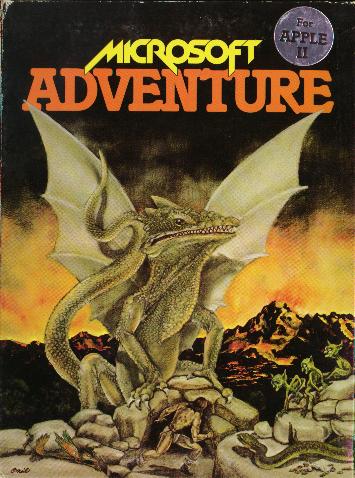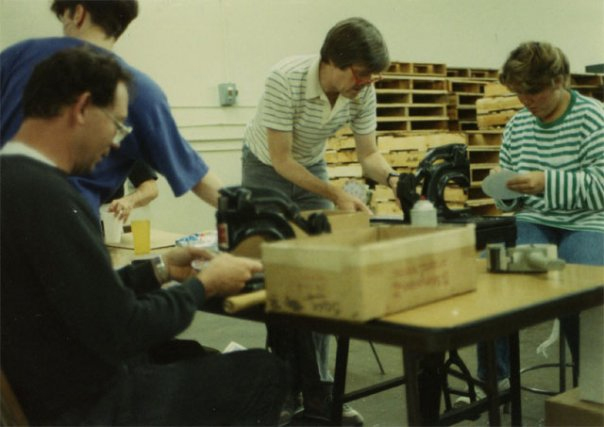Nice write-up by Ars Technica on the ScummVM project’s history and developers. Hard to believe it’s been around for over 10 years already! (also, I hadn’t heard that they had a brief-lived controversial build that supported Eric Chahi’s Another World, one of the best games of all time…)
Tag: games
-
Maniac Tentacle Mindbenders: How ScummVM’s unpaid coders kept adventure gaming alive
-
Prince of Persia C64
I was very happy to have gotten this far. I had the Kid, the Prince of Persia, running and jumping on my screen. I was able to control it and perform all the normal actions. And it felt right. Timing, speed, animations. Of course it was spot on, it was using the original code written by Jordan Mechner, lifted from its Apple II grave and brought back to life, with a new purpose.
At this point I was sure I could do this. It would only be a matter of months. Oh boy, was I wrong.
From the Prince of Persia C64 Development Blog, in which the author writes with excellent detail about his recent hobby attempt to reverse engineer and port the classic computer game to the Commodore64 (warning: lots of posts about pixels, sprites and assembly language debugging – your entertainment value may vary). The original Apple ][ source code for PoP had long ago been lost, but the game’s creator coincidentally posted a handy excerpt of the game’s design documentation as a PDF on his blog, and many other ports existed, so…why not try recreate the original code?
Bonus: Prince of Persia creator Jordan Mechner has collated his original design notes and journals into a nice 300-page ebook. Neat! I’d love to have a whole series of these for classic games.
(Via O’Reilly Radar)
-
Microsoft Adventure

Speaking of the Seattle behemoth, here’s an interesting history of Microsoft Adventure, the first output of the young company’s “consumer products division” in 1979, an early early example of the not-yet-there retail computer game industry:
The story of Microsoft Adventure provides a good early illustration of both the very real technical and marketing acumen of Gates’s company and its genius for ignoring ethical considerations while still staying on the right side of the law. It provides an early example of what was already becoming the company’s modus operandi, one guaranteed to piss off idealistic hackers as much as it would delight its financial backers. And, not incidentally, it also represents a very important moment in the continuing evolution of adventure games. …
But now we come to the elephant in the room: the question of credit. At no place in the Microsoft Adventure program or its accompanying documentation do the names of Crowther and Woods appear. We are told only that “Adventure was originally written in FORTRAN for the DEC PDP-10 computer,” as if it were the result of a sort of software immaculate conception. Needless to say, Crowther and Woods were never contacted by Microsoft at all, and received no royalties whatsoever for a program that by all indications turned into quite a nice seller for the company; it was later ported to the Apple II, and was one of the programs IBM wanted available at day one for the launch of its new PC in 1981. Because Crowther and Woods, immersed in old-school hacker culture as they were, never even considered trying to assert ownership over their creation, Microsoft violated no laws in doing this. However, the ethics of cloning someone else’s game design and lifting all of their text literally verbatum, and then copy protecting it (the irony!) and selling it… well, I don’t think that calling it “ethically dubious” is going too far out on a limb.
The article also has some tech discussion about how Microsoft coder Gordon Letwin managed to squeeze all of the classic Adventure gameplay and text into that newest of new mediums, the floppy, a revolutionary move away from the slow-loading cassette tapes common at the time.
(Via O’Reilly Radar)
-
Glados Treadmill
If GLaDOS is running your treadmill, I suggest finding a new gym.
(Via GameSetWatch)
-
Maniac Mansion Disassembled

The Mansion – Technical Aspects
If you love the old Lucasfilm games and want a peek into how their venerable game engine worked from a very technical perspective, you should read this article that walks through a disassembled Maniac Mansion. Extra bonus: Ron Gilbert, the creator of the SCUMM scripting language, drops a lengthy note in the comments section with insider info:
One of the goals I had for the SCUMM system was that non-programers could use it. I wanted SCUMM scripts to look more like movies scripts, so the language got a little too wordy. This goal was never really reached, you always needed to be a programmer. 🙁
Some examples:
actor sandy walk-to 67,8
This is the command that walked an actor to a spot.
actor sandy face-right
actor sandy do-animation reach
walk-actor razor to-object microwave-oven
start-script watch-edna
stop-script
stop-script watch-edna
say-line dave “Don’t be a tuna head.”
say-line selected-kid “I don’t want to use that right now.”I think it’s amazing that they managed to build a script interpreter with preemptive multitasking (game events could happen simultaneously, allowing for multiple ‘actors’ to occupy the same room, the clock in the hallway to function correctly, etc.), clever sprite and scrolling screen management, and fairly non-linear set of puzzles into software originally written for the 8-bit C64 and Apple II era of computers.
-
Bit.Trip.Runner Blind Gamer
Mechanical engineering student Terry Garret plays through a few levels of Bit.Trip.Runner, one of my favorite games of the past year. It’s a very challenging game, with simple actions but difficult timings that are set to fun 8-music and sound effects.
Oh, by the way, Terry is completely blind.
-
Marge Simpson Rabbit Ears

Awesome full sets of sprites and backgrounds ripped from Konami’s 1991 Simpsons arcade game are available over at The Spriters Resource. I could have bought one of those machines with all of the quarters I lost playing it at the bowling alley or pizza parlor or wherever else grubby kids hung out in 1990s suburbia.
I’ve trimmed down Marge’s action sprites here because I’m fascinated by one detail that I’m pretty sure is otherwise depicted nowhere else in the rest of Simpsons canon: Marge’s Life in Hell rabbit ears hidden inside her hair!
(Via The Spriters Resource: Simpsons. I owe someone source attribution, but I can’t remember where I saw this link recently…help!)
-
Monkey Island Boxing

Know who assembled the retail boxes and whatnots for the original Secret of Monkey Island launch (including putting together the Dial-A-Pirate™ codewheels, as seen above)? The actual developers! I believe that’s Hal Barwood in the red glasses, and maybe that’s Dave Grossman on the left? If you have positive ID’s on anyone in the photo, let me know! The GameCola blog scored these photos of launch assembly from Tim Schafer’s Facebook page, including this good bit of trivia:
In one of these boxes, the developers slipped a five-dollar bill, signed by the whole team. It hasn’t been seen since.
The game industry’s definitely a bit different these days.
-
Korg M01
Nobuyoshi Sano (composer on the arcade series Ridge Racer and Tekken) and Yasunori Mitsuda (who worked on Secret of Mana and composed the music for Chrono Trigger, along with a number of other Square games) have started a new studio called Detune to continue their work on bringing synthesizer emulators to the Nintendo DS. Here Sano demos their upcoming KORG M01 release, which replicates the late 1980’s sounds of the KORG M1.
(Via GameSetWatch)
